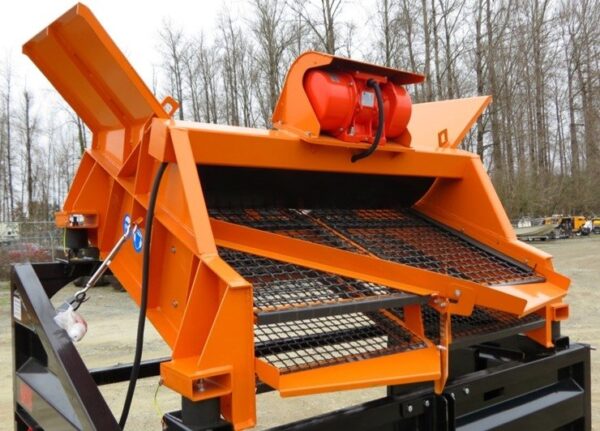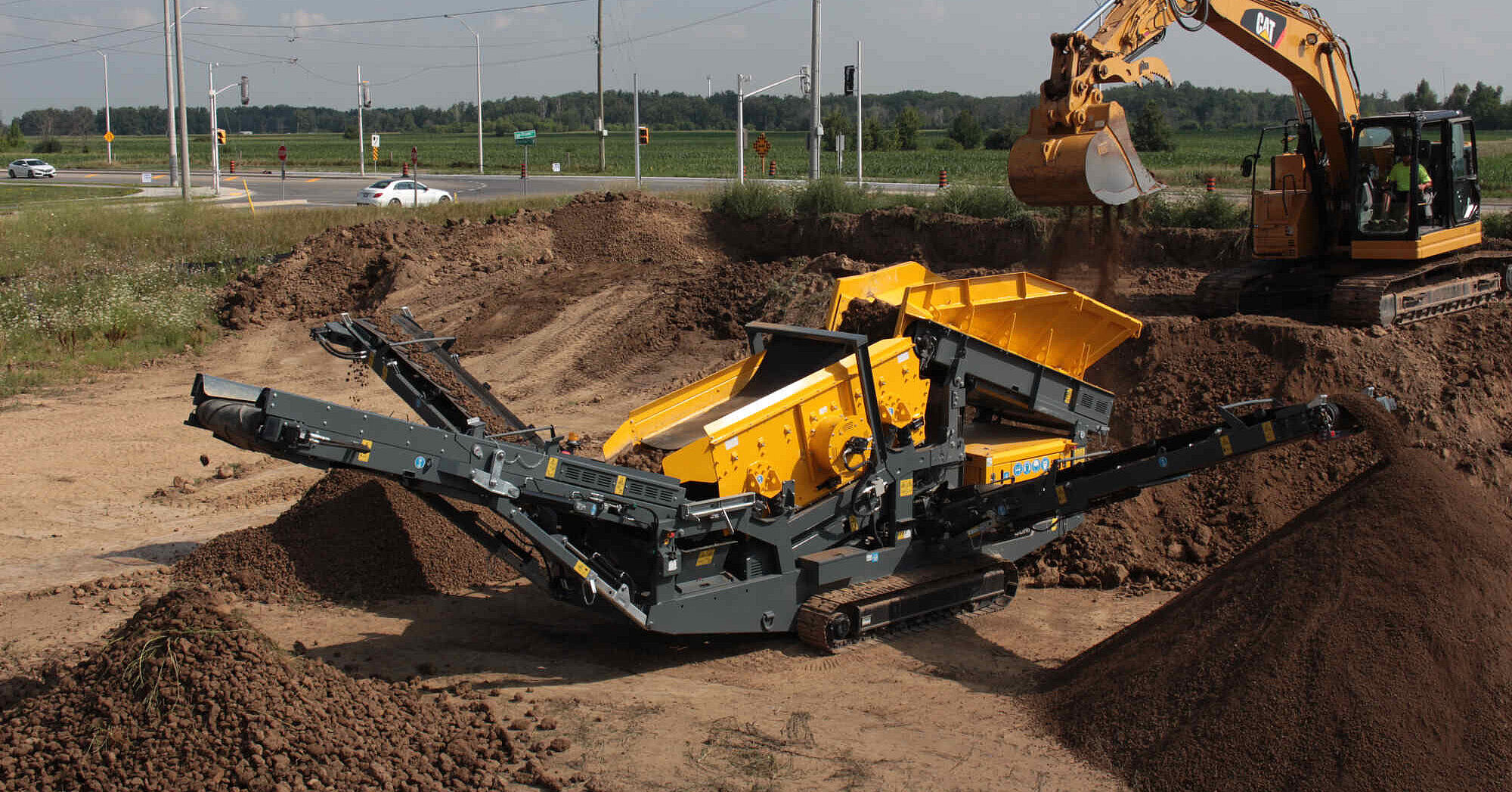Dirt Screen for Sale: Discover the Latest Models and Upgrade Your Screening Refine
Dirt Screen for Sale: Discover the Latest Models and Upgrade Your Screening Refine
Blog Article
Enhance Material Recovery With State-Of-The-Art Dust Screens for Recycling Facilities
In today's globe, where ecological sustainability is a pressing problem, reusing centers play an essential role in minimizing waste and preserving sources. Making best use of material healing can be an intricate procedure, typically prevented by the visibility of dirt and debris in the reusing stream. This is where state-of-the-art dirt displays come into play, using a promising option to boost material recovery rates. By effectively dividing undesirable contaminants, these sophisticated displays hold the possible to revolutionize reusing facilities' procedures. Exactly how precisely do dust screens enhance product healing? What are the key functions that make them modern? And how can recycling centers apply them efficiently? In this discussion, we will check out the response to these questions and dive into real-life instance studies that highlight the effective integration of dust displays in reusing facilities. Prepare to uncover the transformative power of cutting edge dust screens and their effect on improving material healing.
The Relevance of Dust Screens in Recycling Facilities
Dirt screens play an important duty in recycling facilities by successfully separating dust and other contaminants from recyclable materials. These screens, also called trommel displays, are created to efficiently remove unwanted particles and make sure that useful and just tidy materials are processed better.
The key feature of dust displays is to separate bigger pieces of dirt, rocks, and various other non-recyclable items from the stream of materials. By doing so, they stop these impurities from going into the reusing procedure and potentially harmful tools or jeopardizing the quality of the final product.
In addition, dust screens assist to enhance the total efficiency of recycling procedures. By eliminating dust and other impurities early in the process, the screens minimize the amount of hands-on labor called for to arrange and clean the materials later. This not only saves time but likewise minimizes prices and raises productivity.
Additionally, using dirt screens contributes to environmental sustainability. By making sure that uncontaminated and only clean materials are processed, recycling facilities can create higher-quality recycled items. This, in turn, motivates making use of recycled materials in different sectors, reducing the demand for virgin resources and decreasing the ecological impact of source extraction and manufacturing procedures.
Just How Dust Screens Improve Material Recovery
Using dust screens in recycling centers dramatically boosts the procedure of material healing. These screens play an important role in separating dust, particles, and other unwanted materials from the recyclable stream, resulting in improved efficiency and better outcome.
Among the primary methods which dirt displays boost product recuperation is by removing impurities that can impede the reusing process. Dirt, rocks, and other non-recyclable products can create damages to devices, decrease the performance of subsequent sorting procedures, and contaminate the final recycled products. By efficiently screening out these pollutants, dust displays aid make certain that the recyclable products remain pure and of excellent quality.
Moreover, dirt displays make it possible for reusing facilities to recover a better quantity of valuable products. By removing dust and debris, the screens permit a more accurate sorting process, boosting the healing price of recyclable products. This implies that better sources can be reclaimed and reused, minimizing the requirement for virgin materials and decreasing the ecological impact connected with their removal and production.
Along with boosting product healing, dust screens also add to the total efficiency of reusing facilities. By protecting against equipment damage and minimizing downtime triggered by clogs and obstructions, these screens help preserve a smooth and uninterrupted recycling procedure. This boosted efficiency equates into expense financial savings and enables for greater throughput, eventually improving the success and sustainability of recycling operations.
Trick Attributes of State-of-the-Art Dirt Screens
To better improve the effectiveness and effectiveness of material recovery in recycling centers, modern dirt displays are furnished with essential features that enhance the separation procedure and make certain the finest quality outcome (dirt screen for sale). These functions include sophisticated screening innovation, customizable settings, and robust construction
One key feature of cutting edge dirt screens is their advanced screening modern technology. These displays are developed with precision-engineered mesh or perforated plates that efficiently separate dust and particles from the recyclable materials. The dimension and spacing of the openings in the displays can be personalized to accommodate various kinds of materials, allowing for reliable splitting up and maximum healing rates.
Another important feature of these dirt displays is their customizable settings. Reusing facilities can adjust the speed, angle, and amplitude of the displays to maximize the separation procedure. This flexibility permits drivers to here tweak the screens according to the certain demands of the products being processed, causing boosted precision and greater healing rates.
Moreover, advanced dust screens are built with robust construction to endure the harsh conditions of recycling facilities. They are made from durable materials such as stainless-steel or high-strength alloys, guaranteeing long life and marginal downtime due to maintenance or repair work. In addition, these displays are designed with simple accessibility for cleaning and maintenance, decreasing and facilitating reliable procedures downtime.
Actions to Executing Dirt Screens in Recycling Facilities
What are the essential steps for integrating dirt screens right into reusing centers? Implementing dirt displays in reusing facilities includes an organized approach to guarantee reliable installation and operation. The complying with are the essential steps to efficiently incorporate dust screens:
Analysis: Conduct a detailed evaluation of the center's demands and requirements to determine the suitable dust display specs. Consider aspects such as material kind, volume, and wanted splitting up efficiency.

Installation: Prepare the facility for the installation of the dust displays. Comply with supplier standards and ensure proper alignment and combination with the reusing procedure.
Testing and Calibration: Once the dirt screens are mounted, conduct thorough testing to make sure correct functioning. dirt screen for sale. Calibrate the system to accomplish preferred splitting up efficiency and lessen worldly loss
Training and Upkeep: Train staff on operating and preserving the dust display system. Establish a normal maintenance timetable, including cleansing and assessment, to ensure optimum efficiency and longevity.

Study: Successful Material Recuperation With Dust Screens
Incorporating dirt displays right into reusing facilities has proven to be a successful approach for achieving efficient product recovery, as shown by a number of case research studies. These study highlight the favorable influence of dirt screens on the general recycling process.
One notable instance research study comes from a reusing center in a major city. By carrying out dirt screens, the facility was able to considerably lower the quantity of contamination in their recyclable materials. This resulted in improved sorting accuracy and enhanced recovery rates for valuable products such as metal, plastic, and paper. The intro of dust displays also assisted to lessen the damage on arranging tools, lowering upkeep prices and downtime.
An additional study showcases a rural recycling facility that fought with too much dust and debris in their incoming waste stream. By you can try this out mounting dust displays, the center was able to remove a huge portion of the undesirable materials, causing cleaner recyclables and improved efficiency in the arranging procedure. This led to higher material recuperation rates and lowered waste sent to the landfill.
These study show that including dirt screens right into reusing centers can have a substantial favorable effect on material healing. By effectively getting rid of dirt, particles, and various other impurities, reusing centers can improve their overall recycling rates, decrease land Website fill waste, and make best use of the worth of retrieved products.
Final Thought
In final thought, making use of state-of-the-art dust screens in recycling facilities is crucial for boosting material recuperation. These screens effectively get rid of dirt and debris, permitting for the effective separation and recuperation of beneficial products. By executing dust screens, reusing centers can substantially enhance their recycling processes and add to a much more sustainable future.
One of the primary ways in which dust screens boost product recovery is by removing impurities that can impede the reusing procedure. By efficiently evaluating out these pollutants, dirt displays assist guarantee that the recyclable materials stay pure and of high quality.
Additionally, dirt screens make it possible for recycling centers to recover a greater quantity of beneficial materials.In addition to boosting material recuperation, dirt displays likewise contribute to the general effectiveness of reusing facilities.In final thought, the use of state-of-the-art dirt displays in reusing centers is vital for improving material recovery.
Report this page